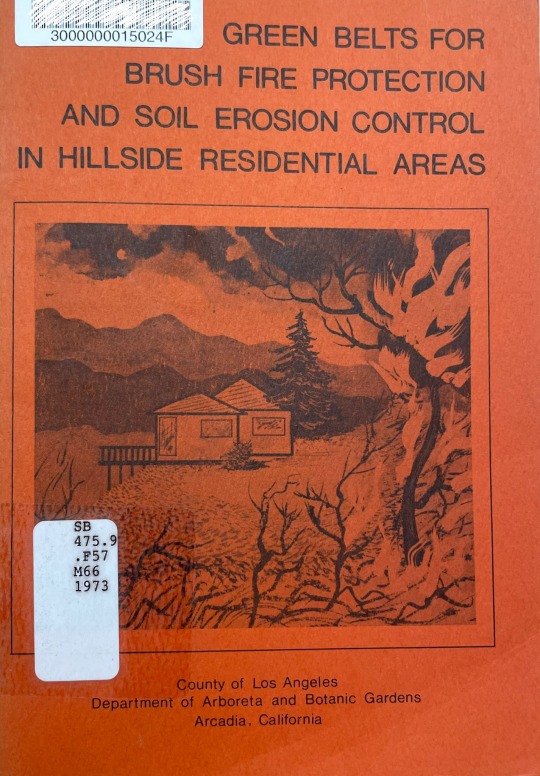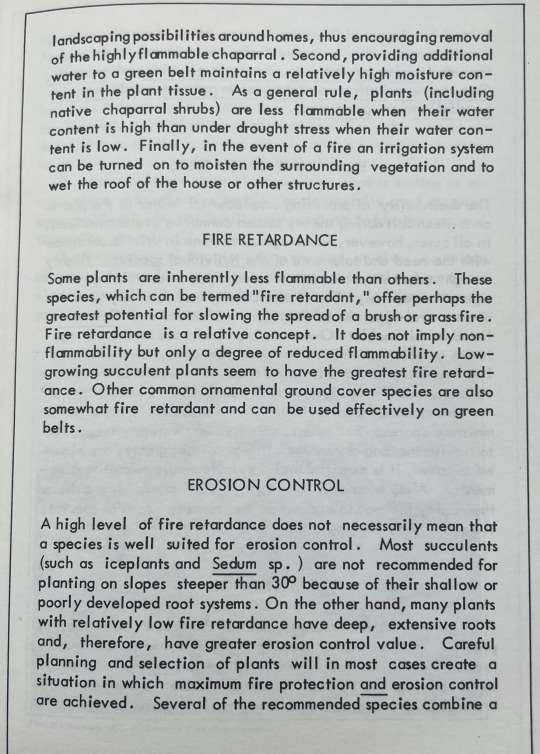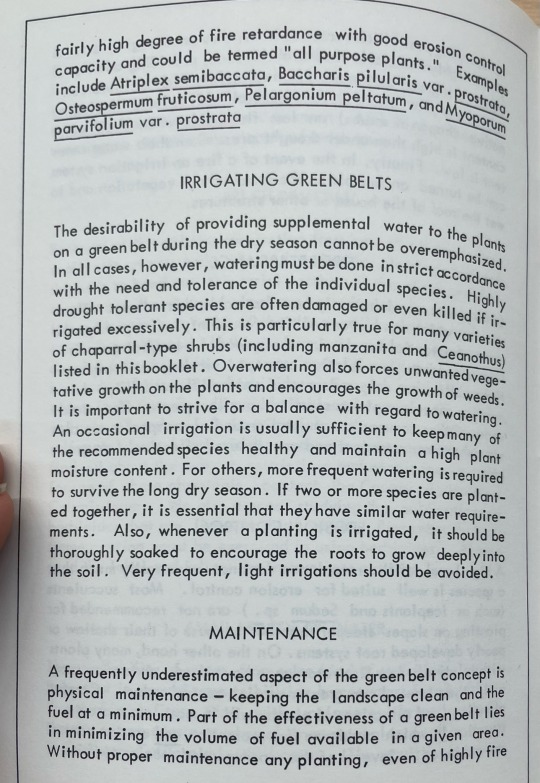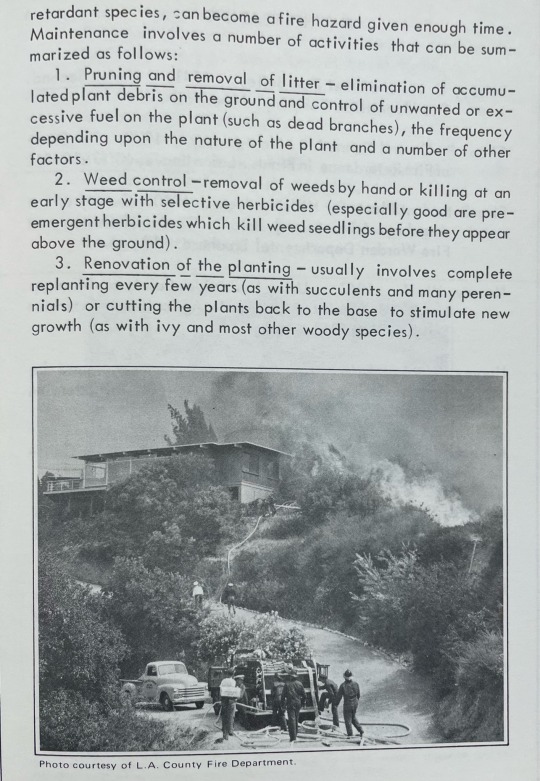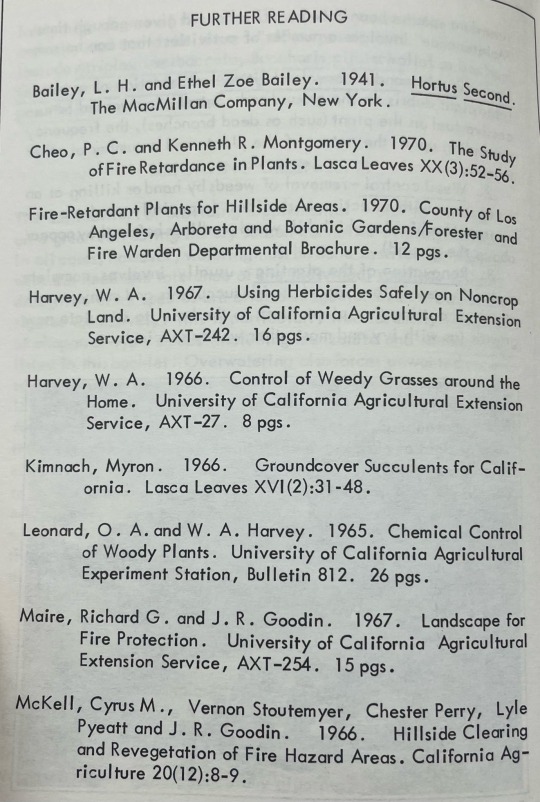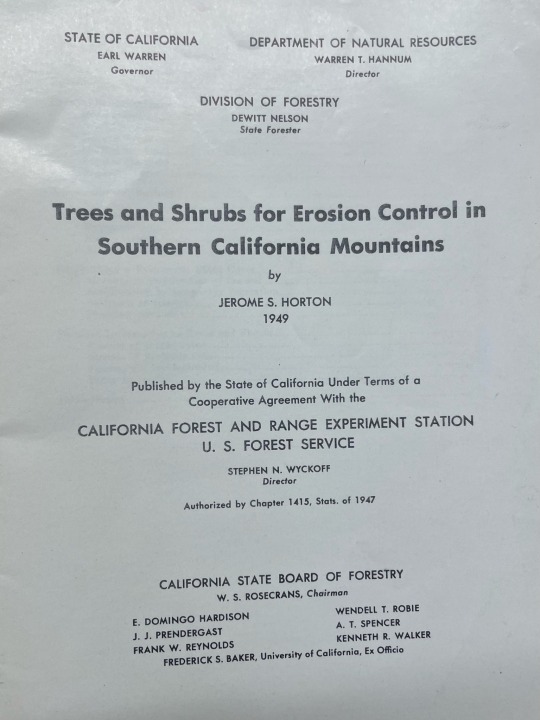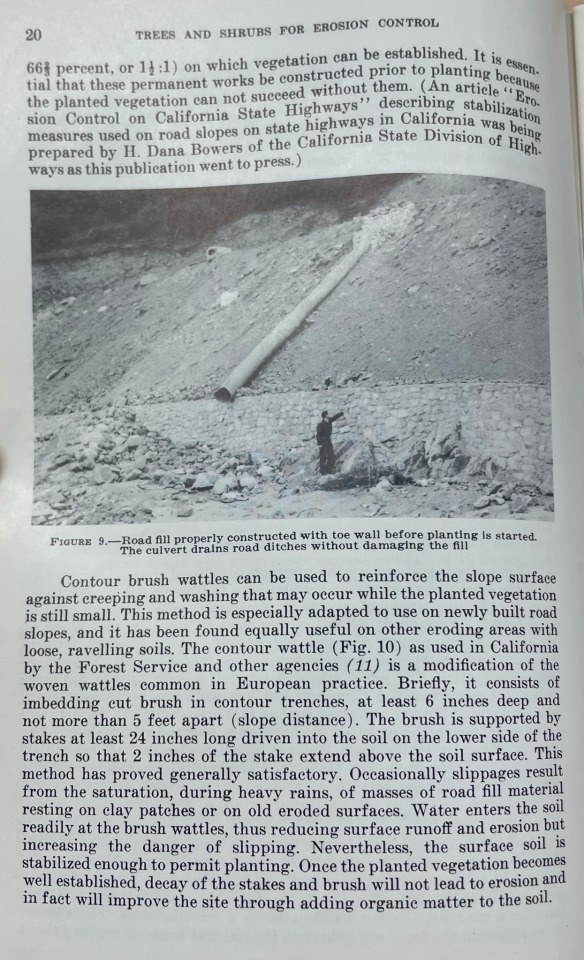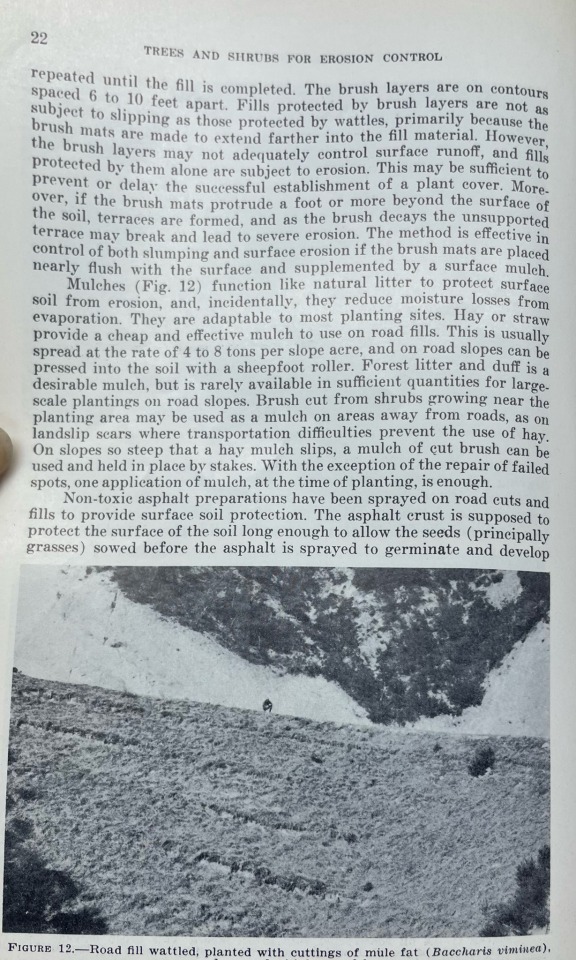#erosion control
Text
"Many people know about the Yellowstone wolf miracle. After wolves were reintroduced to the national park in the mid-1990s, streamside bushes that had been grazed to stubble by out-of-control elk populations started bouncing back. Streambank erosion decreased. Creatures such as songbirds that favor greenery along creeks returned. Nearby aspens flourished.
While there is debate about how much of this stemmed from the wolves shrinking the elk population and how much was a subtle shift in elk behavior, the overall change was dramatic. People were captivated by the idea that a single charismatic predator’s return could ripple through an entire ecosystem. The result was trumpeted in publications such as National Geographic.
But have you heard about the sea otters and the salt marshes? Probably not.
It turns out these sleek coastal mammals, hunted nearly to extinction for their plush pelts, can play a wolf-like role in rapidly disappearing salt marshes, according to new research. The findings highlight the transformative power of a top predator, and the potential ecosystem benefits from their return.
“It begs the question: In how many other ecosystems worldwide could the reintroduction of a former top predator yield similar benefits?” said Brian Silliman, a Duke University ecologist involved in the research.
The work focused on Elk Slough, a tidal estuary at the edge of California’s Monterey Bay. The salt marsh lining the slough’s banks has been shrinking for decades. Between 1956 and 2003, the area lost 50% of its salt marshes.
Such tidal marshes are critical to keeping shorelines from eroding into the sea, and they are in decline around the world. The damage is often blamed on a combination of human’s altering coastal water flows, rising seas and nutrient pollution that weakens the roots of marsh plants.
But in Elk Slough, a return of sea otters hinted that their earlier disappearance might have been a factor as well. As many as 300,000 sea otters once swam in the coastal waters of western North America, from Baja California north to the Aleutian Islands. But a fur trade begun by Europeans in the 1700s nearly wiped out the animals, reducing their numbers to just a few thousand by the early 1900s. Southern sea otters, which lived on the California coast, were thought to be extinct until a handful were found in the early 1900s.
In the late 1900s, conservation organizations and government agencies embarked on an effort to revive the southern sea otters, which remain protected under the Endangered Species Act. In Monterey Bay, the Monterey Bay Aquarium selected Elk Slough as a prime place to release orphaned young sea otters taken in by the aquarium.
As the otter numbers grew, the dynamics within the salt marsh changed. Between 2008 and 2018, erosion of tidal creeks in the estuary fell by around 70% as otter numbers recovered from just 11 animals to nearly 120 following a population crash tied to an intense El Niño climate cycle.
While suggestive, those results are hardly bulletproof evidence of a link between otters and erosion. Nor does it explain how that might work.
To get a more detailed picture, the researchers visited 5 small tidal creeks feeding into the main slough. At each one, they enclosed some of the marsh with fencing to keep out otters, while other spots were left open. Over three years, they monitored the diverging fates of the different patches.
The results showed that otter presence made a dramatic difference in the condition of the marsh. They also helped illuminate why this was happening. It comes down to the otters’ appetite for small burrowing crabs that live in the marsh.

Adult otters need to eat around 25% of their body weight every day to endure the cold Pacific Ocean waters, the equivalent of 20 to 25 pounds. And crabs are one of their favorite meals. After three years, crab densities were 68% higher in fenced areas beyond the reach of otters. The number of crab burrows was also higher. At the same time, marsh grasses inside the fences fared worse, with 48% less mass of leaves and stems and 15% less root mass, a critical feature for capturing sediment that could otherwise wash away, the scientists reported in late January in Nature.
The results point to the crabs as a culprit in the decline of the marshes, as they excavate their holes and feed on the plant roots. It also shows the returning otters’ potential as a marsh savior, even in the face of rising sea levels and continued pollution. In tidal creeks with high numbers of otters, creek erosion was just 5 centimeters per year, 69% lower than in creeks with fewer otters and a far cry from earlier erosion of as much as 30 centimeters per year.
“The return of the sea otters didn’t reverse the losses, but it did slow them to a point that these systems could restabilize despite all the other pressures they are subject to,” said Brent Hughes, a biology professor at Sonoma State University and former postdoctoral researcher in Silliman’s Duke lab.
The findings raise the question of whether other coastal ecosystems might benefit from a return of top predators. The scientists note that a number of these places were once filled with such toothy creatures as bears, crocodiles, sharks, wolves, lions and dolphins. Sea otters are still largely absent along much of the West Coast.
As people wrestle to hold back the seas and revive their ailing coasts, a predator revival could offer relatively cheap and effective assistance. “It would cost millions of dollars for humans to rebuild these creek banks and restore these marshes,” Silliman said of Elk Slough. “The sea otters are stabilizing them for free in exchange for an all-you-can-eat crab feast.”"
-via Anthropocene Magazine, February 7, 2024
#otters#sea otters#conservation#erosion#coastal erosion#coastline#marshes#saltwater#marine science#marine biology#marine animals#sea creatures#ocean#sustainability#soil erosion#erosion control#crab#good news#hope
3K notes
·
View notes
Text
CREP
Don't worry, that actually stands for Conservation Reserve Enhancement Program (CREP). We did a big tree planting with their assistance in 2004, one around 2013ish, and one in 2020 (that one got weird).
The one from 2013 was planted because the creek had repeatedly risen up over the road and crossed on section of field, eroding it. We made a joint decision with my father to 'retire' an acre and plant it in tree species that can stand up to wet sites and stream abuse! Black walnut, sycamore, black locust, and wild cherry.
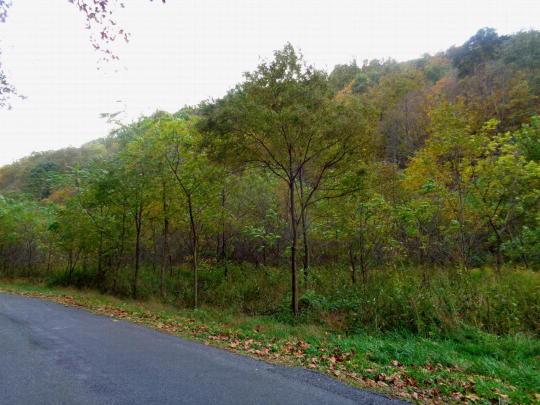
At the end of summer my husband had to prune it a little, because there were branches reaching out toward the road. We didn't want the road crew to come through and butcher them. They're starting to be a little forest, though, and in another ten years the area will look wonderful! The next time the creek decides to flood that direction, the trees will hold the soil.
68 notes
·
View notes
Link
49 notes
·
View notes
Text
Keeping the Water in the Ground with Swales
It’s scorching hot and the rains just won’t come. You can use water from your well to keep your plants from dying, but under these conditions the water table could just drop, leaving you high and dry. Then, when the long awaited rain comes, half your topsoil could get washed away in the downpour. So horrible, yet so familiar! Fortunately, there is a really neat technique that makes sure your water will stay on – or rather under – your land, instead of ripping through the surface before flowing away never to be seen again.

image source
The Behavior of Water
It’s a good idea to take a close look at what water does during a heavy rainstorm. True, most of us don’t enjoy running around under the open sky when it’s raining cats and dogs. But it can be very educational to observe the natural flow of water. It always takes the quickest way down (never up). And depending on the flow, which in turn depends on the amount of water and the ground’s inclination, it can even tear its own way through the landscape. If the ground is fairly dry and without much vegetation, you will even see how a small stream can create a gully – growing into veritable canyons – by carrying sediment with it.

image source
That sediment may be your valuable topsoil! And fairly soon after the rain stops, it will be gone, along with the stream of water. Where did it all go? Just follow the canyon, and you are likely to find it leading away from your land, towards the lower elevations.
But That’s What Water Does. How Can We Counter It?
Admittedly, we will never change the natural behavior of water. What we can do, however, is use it for our purposes. So if it really always goes downhill, let’s give it a place to go: a ditch dug out on the contour line of a hill, which is known as a swale. And that’s all! Since the swale is on contour, meaning that it’s completely horizontal, the water is not going to go anywhere from there until the swale is full (something we must also prepare for). Now that the water lost its momentum, it’s simply going to sit there, and slowly seep downward into the soil. There it won’t have the speed it normally flows with on the surface, so it can’t carry away any soil. Instead it gradually saturates the ground on the hillside below the swale.
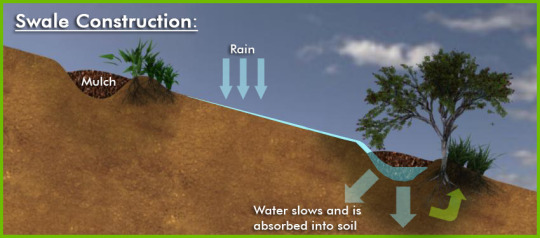
image source
How to Build Swales
It’s really quite simple: First comes the precision work of measuring out the contour line, followed by the grunt work of digging. You may use machines if your topography allows, or do everything by hand, but in either case, exact measurement is the make-or-break aspect of a swale. There are many different methods for this, ranging from the modest (yet effective) A-frame, to the hose level, all the way to the high-tech laser level.

When you are certain that the line is exactly horizontal, you can start digging the trench. Though it can be smaller, I personally like a bigger swale of about 2’ width and depth. That way it can take up more water, and over time it will be gradually filled with soil anyway. What’s most important when digging the swale is to make sure that the bottom remains exactly on contour! The excavated soil we pile up on the side of the ditch that’s sloping downward. This berm is an ideal place to plant trees into to hold the soil together, to help with water saturation and dispersal, as well as to shade the swale to slow down evaporation. In a great design they will also grow something you can eat.
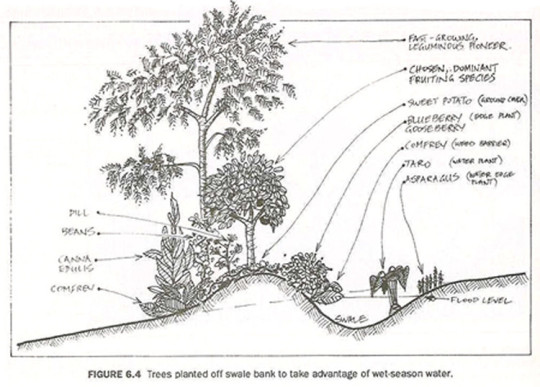
image source
There are a couple of things to look out for: For one thing, the swale should never be placed directly above any buildings (gardens are a much better idea). The best place for them is high up on a hill. Also, make sure the slope doesn’t exceed 15 degrees. Both of these are basic safety measures against slides. It’s also important to make sure the bottom of the swale has a decent water saturation, of at least an inch per hour. Finally, one must prepare for record level rainfall, in other words even the best swale will fill up… and then what? The water needs to go somewhere! So have the overflow channeled into a pond, a dam, or any other feature you have installed for water management.

image source
Okay, so you’ve measured out the contour line, dug a nice big swale, planted trees into the berm, and double-tripple checked that the bottom of your ditch is perfectly level. Great, now you can lean back and wait for the rain! When it comes, get out there again to see how your swale is performing.
Maintenance and Long-Term Effects
After a year or so you can take a look at the swale, preferably when it’s not full of water. You’ll see that it’s not as deep any more as how you dug it. It has filled up with soil: your topsoil! This is your land, that otherwise would have been carried away to your neighbor, or eventually into the ocean, to be lost forever. But here it is, ready to be dug out and used for planting. Of course once again, it’s important to keep the bottom completely leveled.
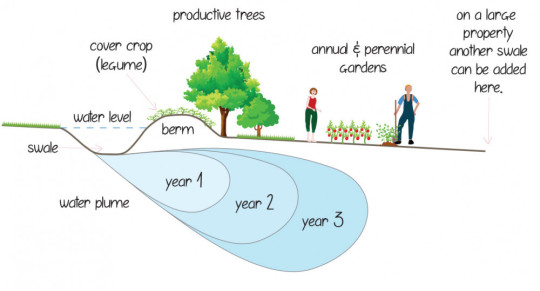
image source
The other effect you are not likely to see immediately, is the water inside, that is under your ground. This is a very gradual process, but the water is going to hang around much longer inside the soil than on the surface. After a while it adds to the water table, and … depending on numerous factors … it will raise it again. There have been many accounts of wells that have been dry for years started having water again, a few years after a swale was built on a nearby hill. But since farming and gardening naturally makes you want to think long-term, this technique will fit right into it.
sources: 1, 2, 3, 4, 5, 6, 7, 8, 9, 10
27 notes
·
View notes
Text
0 notes
Text
Sox Erosion Control Solution
Experience the power of cutting-edge erosion control solutions with International Subsea Services! To protect your coastal infrastructure in North Port, Fort Myers, Cape Coral, Pasco County, Pinellas County, and Hillsborough County, we have developed a specialized Sox Erosion Control Solution. With more than 20 years of experience, we promise outstanding reliability and exceptional service. Choose our Sox Erosion Control Solution today to avoid letting erosion ruin your property!

0 notes
Text
Savinaya Infratech's Innovations in Slope Stability: Unveiling Tomorrow's Foundations Today
Embark on a journey of innovation with Savinaya Infratech's soil nail solutions, designed to redefine the parameters of slope stability. Our company's forward-thinking approach and cutting-edge technologies ensure that your projects are equipped with the latest advancements in slope engineering. Discover the future of stability with Savinaya Infratech.
0 notes
Text
After the Storm
In December we got a reminder of what it means when climate change increases the force of a storm. Some evening thunder rolled in as we watched calmly from the verandah. “That seems pretty fierce” Charlie remarked, looking concerned. We soothed him with “Just a summer storm. We get them all the time.”
And then the wind picked up even further. I went to look around the corner of the verandah and…

View On WordPress
0 notes
Link
Turn your challenging sloped yard into a lush landscape paradise! 🌿 Discover essential tips on soil analysis, choosing the right plants, and mastering erosion control to enhance your outdoor space. Dive into our guide, "How to Landscape a Sloped Yard", and start transforming your sloped terrain today. Perfect for DIY enthusiasts and gardening aficionados! #Landscaping #SlopedYardLandscaping
0 notes
Text
Geobags in Civil Engineering: A Comprehensive Solution for Coastal Protection and Erosion Mitigation
Introduction:
Coastal erosion poses a significant challenge to civil engineers worldwide, requiring innovative solutions that balance effectiveness, environmental sustainability, and cost efficiency. In recent years, geobags, a product of geotechnical engineering, have gained prominence as a versatile and resilient tool in the realm of coastal protection. This article explores the technical…

View On WordPress
#adaptability#civil engineering#coastal protection#community engagement#cost-effective construction#durability assessment#erosion control#geobags#hydraulic permeability#Resilient Infrastructure#sustainable solutions
0 notes
Text

Prevent costly damage to your Atlanta home with their tailored residential erosion control atlanta services. They specialize in designing and implementing effective methods that cater to your specific needs. Invest in your property's safety and lasting charm today!
0 notes
Text
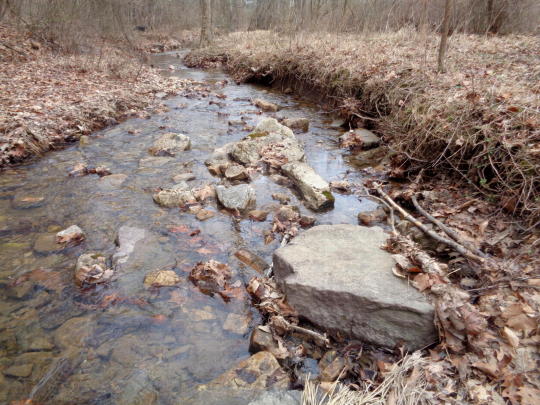
Big stones. I'd like to shift the bigger ones over against that bank for erosion protection, but they are extremely heavy. There is also no way to access the stream edge with the tractor from either side.
M-a-y-b-e my son and I could shift them with a metal bar for a lever.

This old stump is so rotted and smoothed off that it looks like a sculpture. It fell roughly ten years ago. (another, smaller fallen tree is wedged against it, now.) It was kind of neat when the whole tree was bridging the stream! I took a series of photos of my son as a Bold Adventurer looking for the Lost City of Skittles (a story my cousin came up with)

We were pretending piranhas. I do miss the days when everything was an Adventure.
18 notes
·
View notes
Photo

Modern Landscape
Ideas for a sizable, contemporary, brick-retaining-wall backyard landscape in the summer.
0 notes
